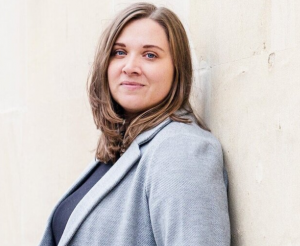Much like burnout and employee wellbeing, DEI (diversity, equity and inclusion) has become a hot topic inside and outside of the workplace.
Both things play an integral role in the employee experience and contribute massively to individuals and company success. In fact, I’d argue that the two are intrinsically linked. There can be no real well-being if there isn’t diversity, when people aren’t treated equitably, nor if people do not feel included.
All 3 facets of DEI are essential to building a sense of belonging in workplaces, which has been shown to improve wellbeing. Diverse organisations are also more innovative and perform better – and they are 70% more likely to report that gain new market share than those that aren’t.
Yet, only 50% of all employees believe their company is genuinely committed to DEI according to recent reports.
So how can we improve this? How can we help leaders to create safe, inclusive spaces that not only nurture wellbeing but also improve business performance?
I spoke with Hanna Andersen, a leadership coach, diversity champion and the founder of AS WE ARE to find out more.

Hanna believes that businesses have the power to make a positive impact on the world but to do this, they need leadership that reflects the diverse communities that we work in. Using her background in employee engagement, learning & development and working with employee networks, Hanna started to build a new way of developing future leaders.
The importance of DEI in Business
It feels like companies are finally taking DEI seriously. What do you think was the catalyst and why should leaders be paying attention?
I think what we’re seeing here is the green shoots of the seeds that have been planted and tended to by brilliant experts in the field, particularly Black women, for many many years. This has been accelerated by the increased use of social media as a platform for activism and accountability.
There’s no doubt that the murder of George Floyd in 2020 was a huge catalyst that led to a global reckoning, forcing white people and majority white-led companies to reflect on their part in upholding these systems. Anti-racism is a huge part of what needs to be done and I’m not sure that most companies are there yet.
That being said, you’re right that DEI itself is being taken more seriously and this will continue because it’s something that millennials and GenZ really care about and they’ll soon be the biggest proportion of both the workforce and customer base.
Diverse, Equitable and Inclusive organisations
Much like the mental health space, there was a lot of discourse around performative DEI commitments over the last year. How can you tell if an organisation is truly diverse, equitable and inclusive?
This is such a great question and one that clients ask me a lot. I think there are a few key places that you can look, I’m going to share four with you
Start with the top team. Do they all look the same? If they do, can you find anywhere that they are acknowledging this and providing a clear action plan for change? Be sure to look at the board of directors as well as the executive team, and remember, board members are usually selected so companies should be able to implement change quicker.
Data. How much are they sharing? In the UK any company with +250 employees has to share their gender pay gap – there’s nothing to stop smaller companies from doing it voluntarily, or stopping all companies sharing their ethnicity pay gap. Data gives a really good starting point to understand your problem and is the first step to fixing it.
Who is responsible for DEI within the organisation? Many organisations will have a Head of DEI that sits within HR. But isn’t it important to be considering diversity, equity and inclusion in every part of the business? The ones that really get it will have DEI weaved through every strand with responsibility held in every role – especially the board
Company benefits can tell you a lot about what’s valued in an organisation. For example, do they claim to promote equality but then only offer statutory maternity leave to mothers rather than an enhanced parental leave package for all parents
Turning DEI Strategy into action
How can leaders make sure that DEI commitments are translated from KPIs and posters into tangible actions that create positive, lasting change?
First things first, be prepared that to do this work properly, you will likely need to dismantle and rebuild your policies and procedures. If your company has been built predominantly by one group of people, you will have biases built in without even knowing it. To do this you’re going to need to work with professionals, pay them properly and give them the access they need. Whether that’s bringing somebody into your team or working on a consultancy basis, there are brilliant people working in this field who can help guide you. Also, linking back to my earlier point, don’t assume that this is an HR issue, DEI should be weaved through every journey and touchpoint – whether that’s for your customers, employees or shareholders.
Cognitive Diversity
In amongst the DEI conversations the phrase ‘cognitive diversity’ – aka diversity of thought – comes up in relation to leadership styles. What are your thoughts on this?
I firmly believe that if your team all look different but act and think the same – that’s not diversity. This can be for two reasons – either people are having to pretend to fit in with the status quo because inclusion is not prioritised, or you’re lacking cognitive diversity completely.
I often hear leaders talk about wanting someone who’s a ‘cultural fit’, I know this is well-meaning, but really it translates to “I want someone who thinks like us”.
Diversity of thought comes from having people round the table with different life experiences, this will give different perspectives which makes your decision making and scrutiny better.
It’s also important that businesses start to better understand neurodiversity and how there’s strength in brains that work in different ways.
DEI and Wellbeing
In your experience what impact have you seen DEI have on employee wellbeing? What connection do you think there is between DEI and employee wellbeing.
For me, these two are inextricably linked – how can you feel well at work if you’re not able to be yourself? I think that when we come at DEI from an employee wellbeing perspective, it allows us to take a much more human approach.
Traditionally DEI policies and procedures can take a very legalistic form, and of course equality law is important, but I do think that you can lose sight of what you’re really wanting to achieve. And vice versa, sometimes we approach employee wellbeing simply through a lens of making work fun, when that should be the cherry on a very carefully considered cake. A cake that includes DEI as one of its core ingredients.
If you were an employee that wanted to see DEI & Mental Wellbeing given more importance in the workplace how would you champion/approach the topic with your leadership team?
The first thing I’d say is, you’re not alone. You might not have found them yet, but other people will be feeling the same way as you.
Start by striking up some conversations with people who you think may be affected by some of the same things as you. There really is power in numbers and employee networks can have huge influence.
The approach you take can vary depending on the situation. If you feel that your company would be open to working together, go to the leadership with your suggestions, but make sure to set your boundaries – you might end up taking on a lot of the work – is that what you want?
However, if you think that there are more serious things that need to change and your company is resistant, look at getting some professional support through a service like acas or Organise. And remember – you can leave – it’s not your job to fix it.
Both Hanna and I work with ambitious leaders and organisations to help them discover unique leadership styles, and approaches that improve wellbeing, turn DEI strategies into practical actions and give leaders and teams the support they need to thrive at work.
We are currently running workshops to help forward-thinking organisations weave diversity, equity and inclusion into employee wellbeing strategies (and vice versa).
If you are interested in finding out more about how we can support your team, get in touch. We would love to help

